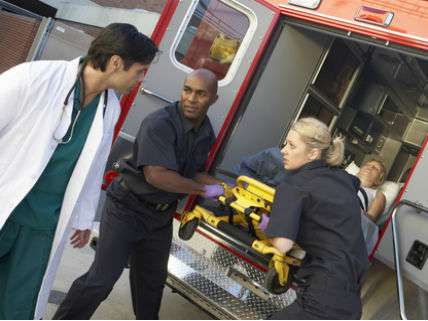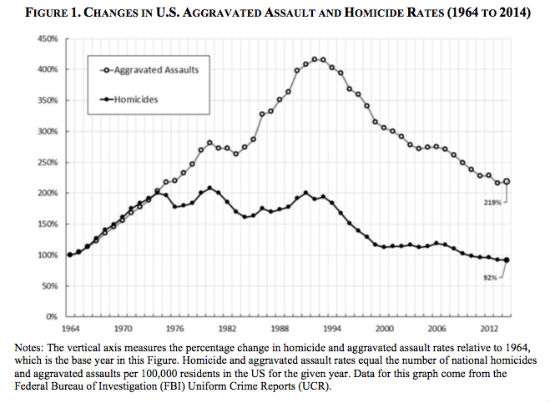911 Emergency Response System Significantly Reduced U.S. Murder Rate, Says Study
More than a 34 percent to 56 percent decrease in homicides attributed to the 911 systems

The U.S. homicide rate peaked in 1980 at 10.2 per 100,000 Americans and the number of annual homicides rose to 24,703 in 1991. Since then U.S. homicide rates have been falling and reached 4.5 per 100,000 in 2014 (a rate not seen since the 1950s) and an annual toll of 14,249. Both the rate and number of murders ticked up in 2015 to 5 per 100,000 and 15,809 respectively. Lots of research has been devoted to trying to figure out why homicide rates fell over the past couple of decades. Some researchers focused on higher incarceration rates; others on more effective policing; still others cited the aging population; and some attributed lower homicide rates to better emergency medicine. Given the fact that the data on criminally inflicted gunshot injuries is not collected comprehensively, this this latter claim has been challenged.
A fascinating new working paper, "Dial 911 for Murder," by George Mason University economists Thomas Stratmann and David Chandler Thomas argue that advances in the 911 emergency response system over time, combined with the advent of cell phones have contributed significantly to the lower U.S. murder rate because victims are receiving emergency medical care ever more speedily. The argument is that victims of violent gun firearms attacks are increasingly likely to be saved from death thus converting what would have been homicides into aggravated assaults. In addition, they find the establishment of 911 systems initially increased reporting of aggravated assaults and that the subsequent proliferation of cell phones seems to have had a deterrent effect on such assaults.
The initial 911 system devised in 1968 connected to an operator who then transferred the call to the police, fire, and ambulance services as appropriate. In the late 1970s, dedicated 911 call centers were established with monitors that displayed the home number and address of callers and from which emergency services were dispatched by trained personnel. Now GPS 911 is rolling out enabling dispatchers to pinpoint callers and dispatch services to people using cell phones. The researchers suggest that "when potential violent street offenders know that cell phone users have a quick way to reach the police, via GPS 911, their incentive to commit a crime decreases."

The researchers account for the lethality of weapons over time, socioeconomic changes, improvements in trauma care, and so forth. Once they've parsed the data, they report:
While the level of violent crimes, measured as aggravated assaults, is 219 percentage points higher in 2014 than in 1964, homicides in 2014 are eight percentage points lower than in 1964. In this paper, we find support for the hypothesis that the introduction of 911 services explains much of the decrease in homicide rates. Moreover, the introduction of 911 provides an explanation for the divergence between aggravated assault and homicide rates that started in the early 1970s. …The empirical results in this paper indicate that reductions in emergency response times played a significant role in reducing U.S. homicides over the past 45 years. ….
The reported 911 effects are quantitatively important, suggesting more than a 34 percent to 56 percent decrease in homicides that can be attributed to the 911 systems and associated reductions in response times. One simple approach to illustrate the benefits of 911 is to use our estimates to quantify the lives saved by 911 innovations. Such an exercise shows that in 2014, without 911 emergency services, the number of homicides in our sample cities would have been more than 13,000 homicides, instead of the reported 5,872.
Citing the trends in Mobile, Alabama they report that the introduction of basic 911 coincided with an immediate 29 percent drop in that city's homicide rate which continued to fall in the following years. However, after the introduction of enhanced 911 in the late 1980s, the city's homicide and assault rates continued to rise. They attribute that increase to the crack cocaine epidemic that dramatically boosted violent crime throughout the U.S. Mobile's murder rate did increase slightly between 1988 and 1991, but was much lower than the 160 percent national increase. The 2009 roll out of GPS 911 was followed by an immediate 42 percent decline in homicides in the city.
Violent crime is indeed is down in the U.S., but Stratman and Thomas make an interesting case that the speedy dispatch of emergency services made possible by the improving 911 system may make homicide statistics much better than they would otherwise be.


Show Comments (82)